This post may contain affiliate links. Please read my disclosure.
This sous vide temperature chart is an easy way to get started sous viding all different kinds of foods!
There are many, many benefits to sous vide cooking, and being able to control the exact temperature is the main one.
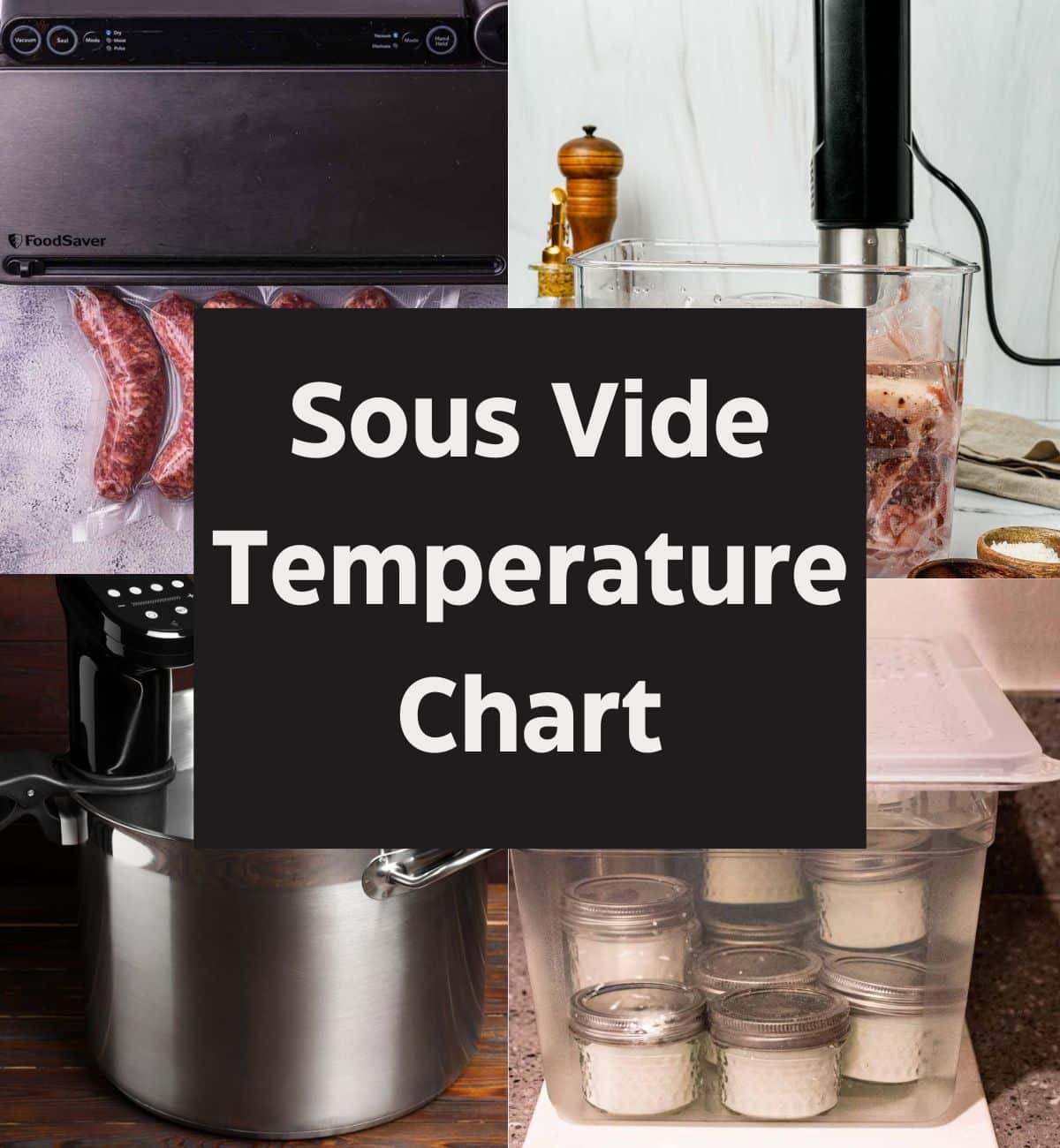
The cooking time and temperature for sous vide cooking is going to be based on 1) what type of meat it is, 2) how thick the meat is, and 3) the doneness desired.
For instance, a 2" steak is going to take longer to cook than a 1" steak. That said, a tender steak (filet or strip steak) will cook in less time than a tougher steak (like chuck steak).
For tender cuts of meat, cooking by thickness is a great way to cook. However, for other cuts cooking based on the timing set below is going to yield the best results.
In addition, foods that are frozen will typically take longer to cook than thawed foods.
The exception might be a roast that is already going to be cooking for 48 hours - it does not usually need additional time if you are cooking straight from frozen.
*Learn more about sous vide cooking and check out the best sous vide recipes
What is Sous Vide?
Sous vide is basically a method of cooking using what is called an immersion circulator (i.e. the sous vide machine). This immersion circulator circulates water in a temperature controlled water bath at a certain temperature to perfectly cook your food every time.
Because the temperature doesn't change, and it keeps your meat (or dessert, veggies, etc.) at the same temperature, your risk of overcooking becomes very minimal.
To learn even more about sous vide cooking, head over and read "what is sous vide cooking and the benefits of sous vide cooking."
Tools Used
You will also want to check out these posts on the best sous vide containers and the best sous vide bags for more information!
You may also want to check out the "Best Sous Vide Containers" and this article on "Sous Vide Bags" for more information on the equipment.
You can download the Quick Reference Temperature chart if you want to easy-to-read printable version. *Note that this guide only includes basic temperatures - for more detailed cooking temperatures based on cuts, thickness, desired doneness, see individual recipes.
Want to Save This Recipe?
Enter your email & I'll send it to your inbox. Plus, get great new recipes from me every week!
By submitting this form, you consent to receive emails from Went Here 8 This.
Sous Vide Temperature Guide
The below sous vide temperature chart gives the basic temperatures for each type of food. Individual recipe will go further in depth for each dish, providing multiple cooking options/temperatures to arrive at different cooking results.
The temperatures below are the basic temperatures to get you started in each area. If you have a certain temp you love cooking at, leave it in the comments below so we can all learn from you!
**Food should not be cooked at below 130°F (54.5°C) degrees for longer than 2 ½ hours to stay within the food safety limits.
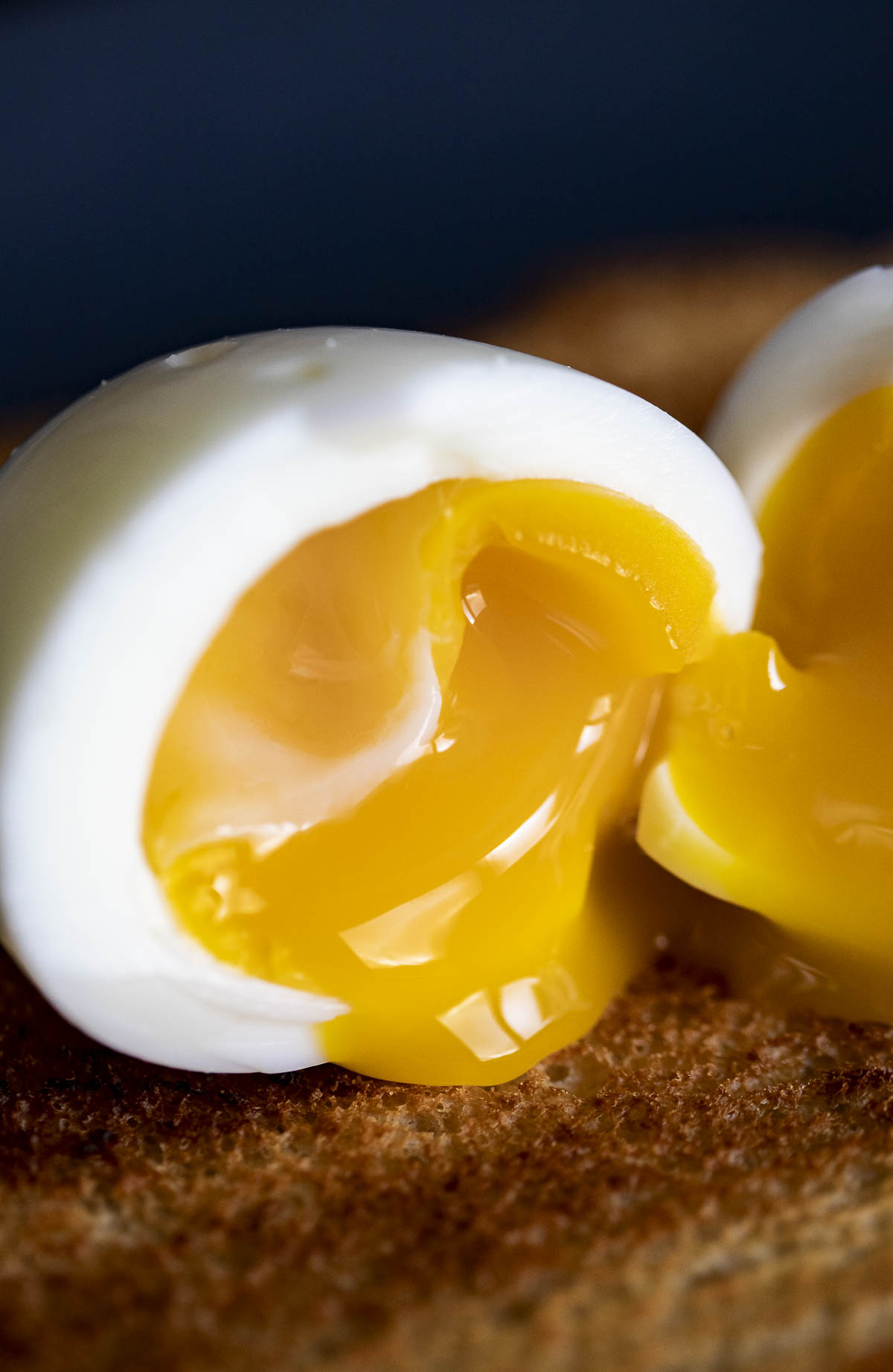
Eggs
| Temperature | Time | Doneness |
| 145.5°F (63°C) | 1 hour | Creamy yolks, barely set whites |
| Boil (2 ½ min), 145.5°F (63°C) | 45 min | Creamy yolks, lightly set opaque whites |
| 165°F (74°C) | 1 hour | Firm whites and yolks |
For more specific individual times and temperatures, check out these recipes:
Chicken/Poultry
The cooking temperatures for poultry is going to be different depending on whether it's white or dark meat. Dark meat will typically cook longer at higher temperatures than white meat.
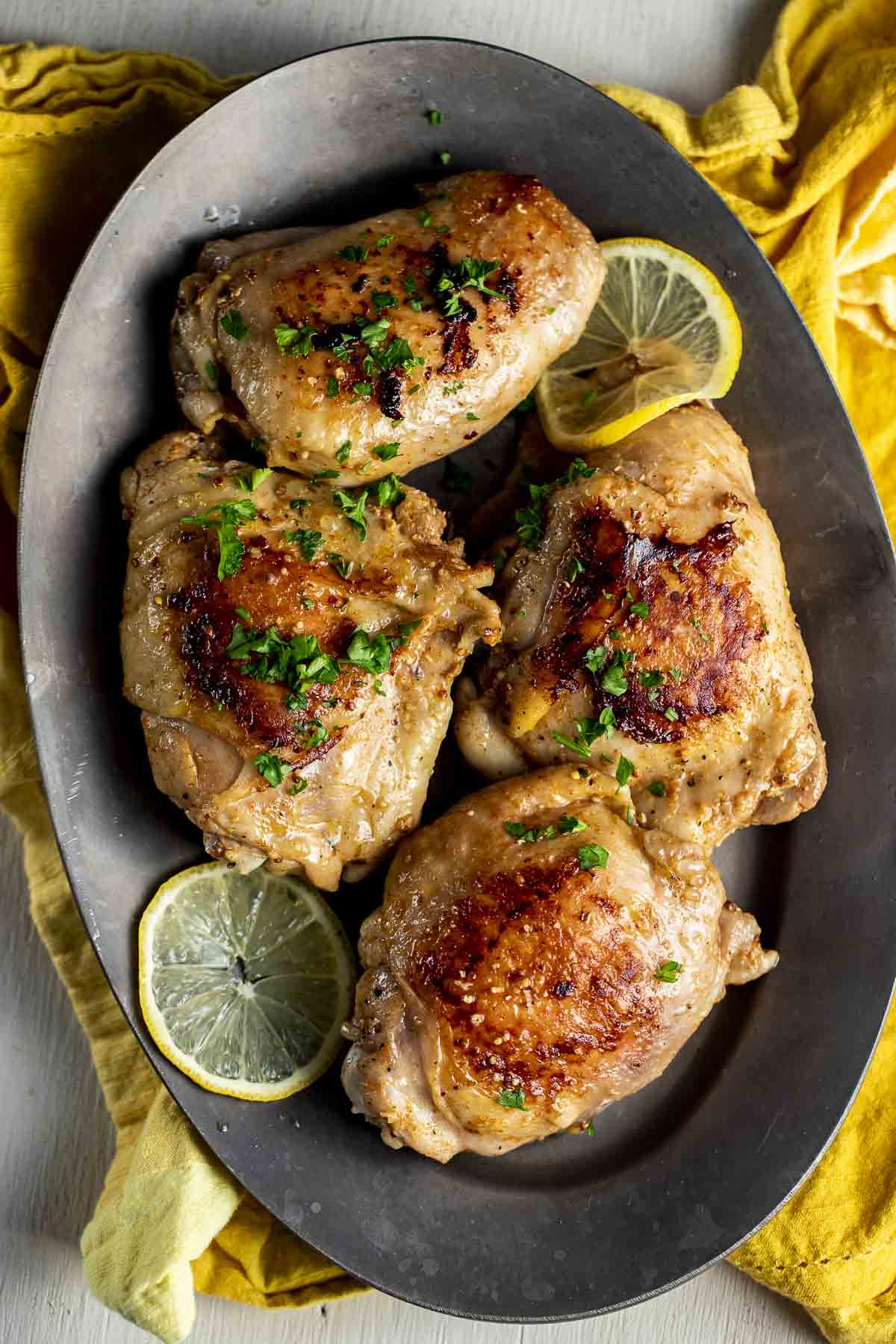
The sous vide is particularly great at cooking white meat because it stays nice and juicy and never gets overcooked like with traditional methods.
| Temperature | Time | Doneness |
| 140°F (60°C) | 1 ½ - 4 hours | Juicy and soft (chicken/turkey breast) |
| 150°F (65.5°C) | 1-4 hours | Firm, more traditional texture (chicken/turkey breast) |
| 160°F (71°C) | 3-4 hours | Juicy and soft (chicken thighs) |
| 160°F (71°C) | 12 hours | Juicy and soft (turkey thighs) |
| 165°F (74°C) | 4-8 hours | Fall off the bone (chicken thighs) |
| 131°F (55°C) | 2-4 hours | Rare and juicy (duck breast) |
| 135°F (57°C) | 2-4 hours | Medium rare (duck breast) |
For more detailed cooking instructions for different cuts of chicken, check out these individual recipes:
- sous vide chicken breast
- sous vide chicken thighs
- sous vide whole chicken
- sous vide chicken wings
- sous vide duck breast
- sous vide duck confit
- sous vide turkey breast
Beef
| Temperature | Time | Doneness |
| 122°F (50°C) to 129°F (54°C) | 1 ½ to 2 ½ hours | Rare |
| 130°F (54.5°C) to 134°F (56.5°C) | 1 ½ to 3 hours | Medium Rare |
| 135°F (57°C) to 145°F (63°C) | 1 ½ to 3 hours | Medium |
| 141°F (60.5°C) to 152°F (66.5°C) | 24-36 hours | Braised |
| 166°F (74.5°C) to 175°F (79.5°C) | 12-18 hours | Shred-able |
The thicker beef is, the longer it should cook. I always recommend using beef at least 1" thick, but preferably 1 ½ to 2" thick (2" is the sweet spot!).
Thinner steaks (1" or less) can cook for 1-1 ½ hours to heat through, while thicker steaks (2-3") will need 2-3 hours to cook through. Be sure to adjust your cook time!
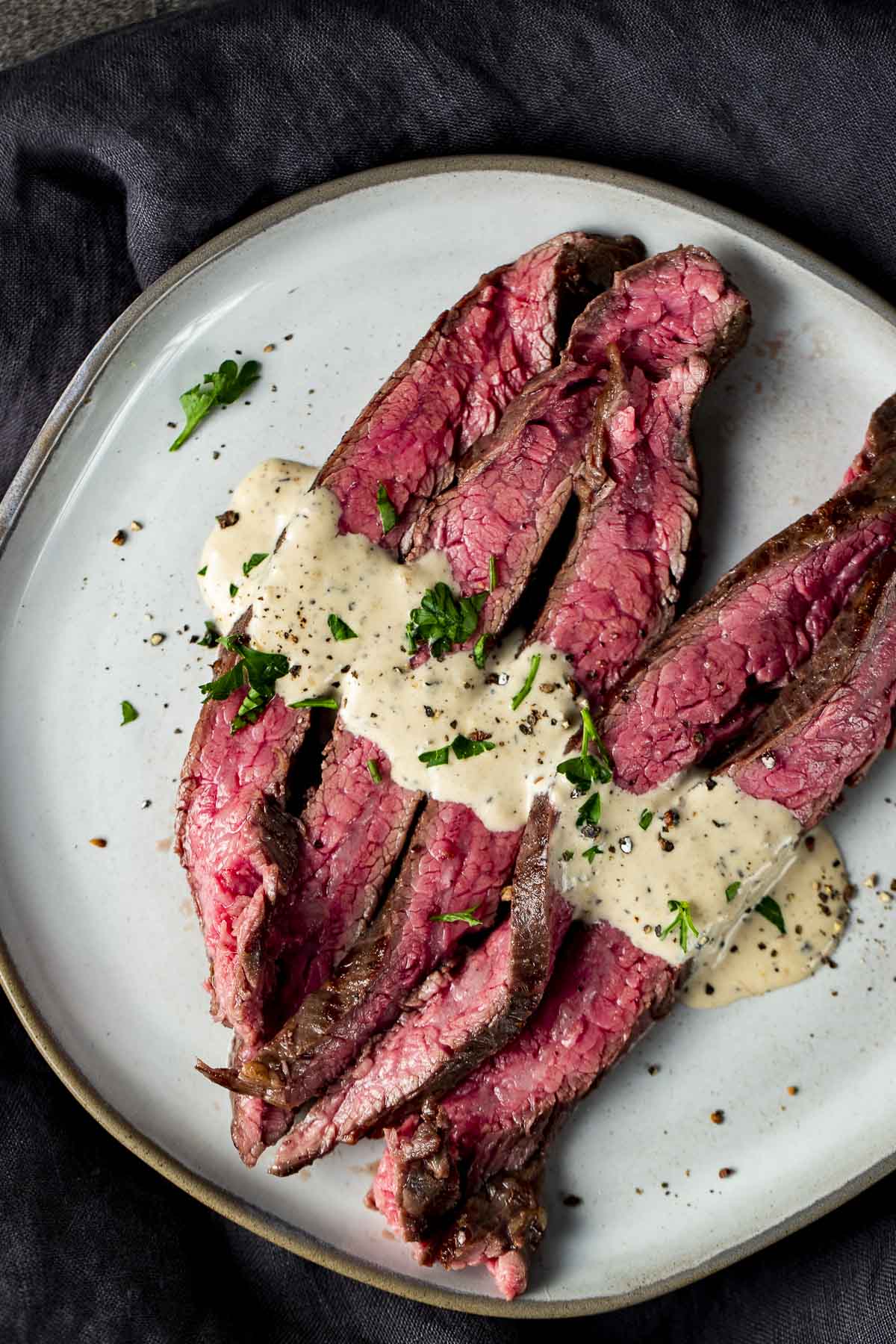
Steaks should always be patted dry thoroughly then seared in a hot skillet for 60 seconds per side with some high smoke point oil (I like avocado oil) before serving. The caramelization adds flavor to the beef.
Check out these individual recipes and guides for beef:
- sous vide ribeye
- sous vide tenderloin
- sous vide sirloin
- sous vide chuck steak
- sous vide flank steak
- sous vide chuck roast
Lamb
| Temperature | Time | Doneness |
| 120°F (49°C) to 127°F (52.5°C) | 2 hours | Rare |
| 128°F (53°C) to 132°F (55.5°C) | 2-3 hours | Medium Rare |
| 133°F (56°C) to 140°F (60°C) | 2-3 hours | Medium |
| 145°F (63°C) to 150°F (65.5°C) | 36-48 hours | Braised |
| 165°F (74°C) to 176°F (80°C) | 36-48 hours | Shred-able |
Lamb should always be patted dry thoroughly then seared in a hot skillet for 60 seconds per side with some high smoke point oil like avocado before serving. The caramelization adds flavor to the lamb.
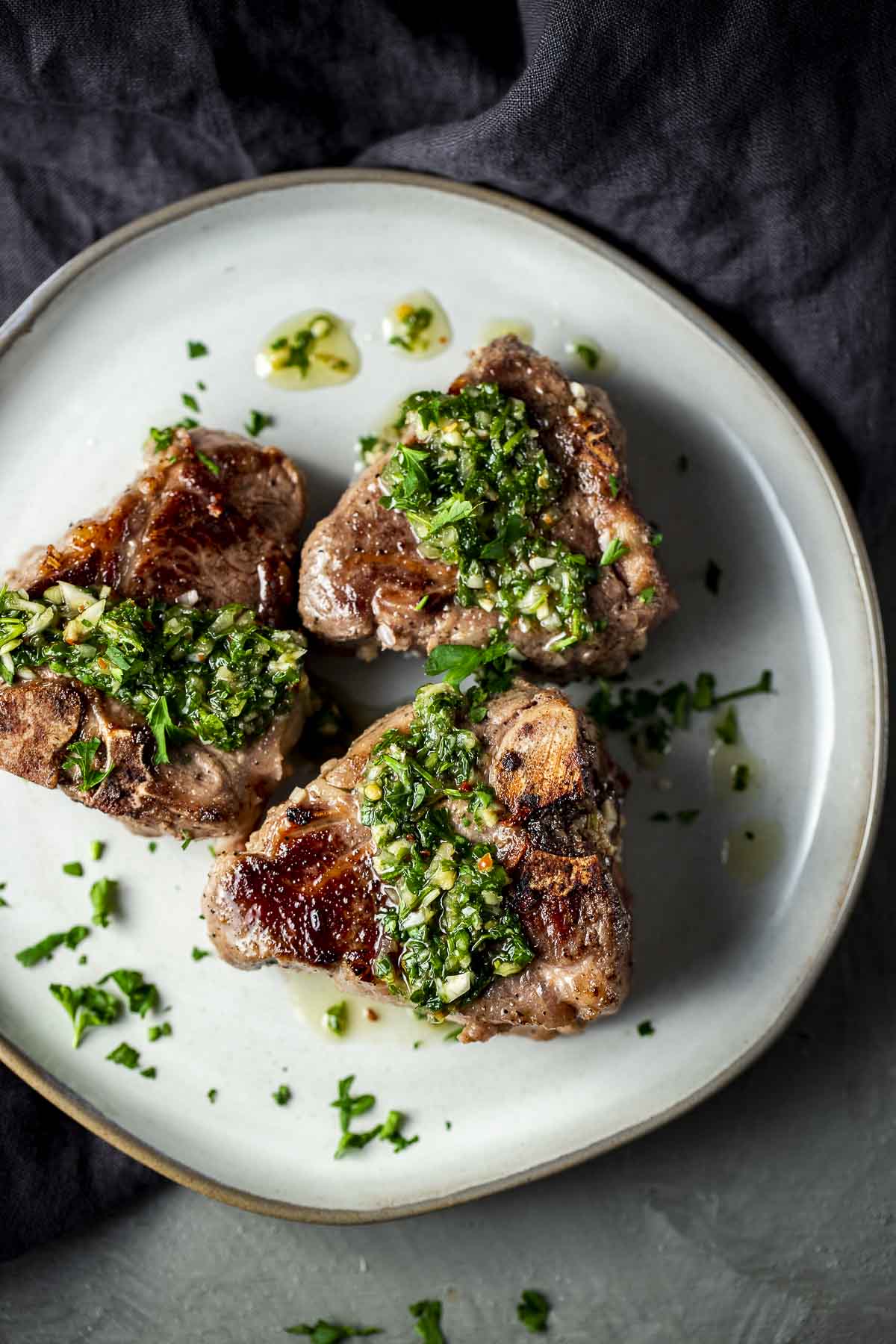
Check out some of these reader favorite lamb recipes:
Pork
| Temperature | Time | Doneness |
| 130°F (54.5°C) | 2-4 hours | Rare (chops, loin, tenderloin) |
| 140°F (60°C) | 2-4 hours | Medium Rare (chops, loin, tenderloin) |
| 145°F (63°C) | 2-4 hours | Medium (chops, loin, tenderloin) |
| 145°F (63°C) | 36 hours | Moist and tender (ribs, shoulder roast) |
| 160°F (71°C) | 18-24 hours | Fall of the bone, flakier (ribs, shoulder roast) |
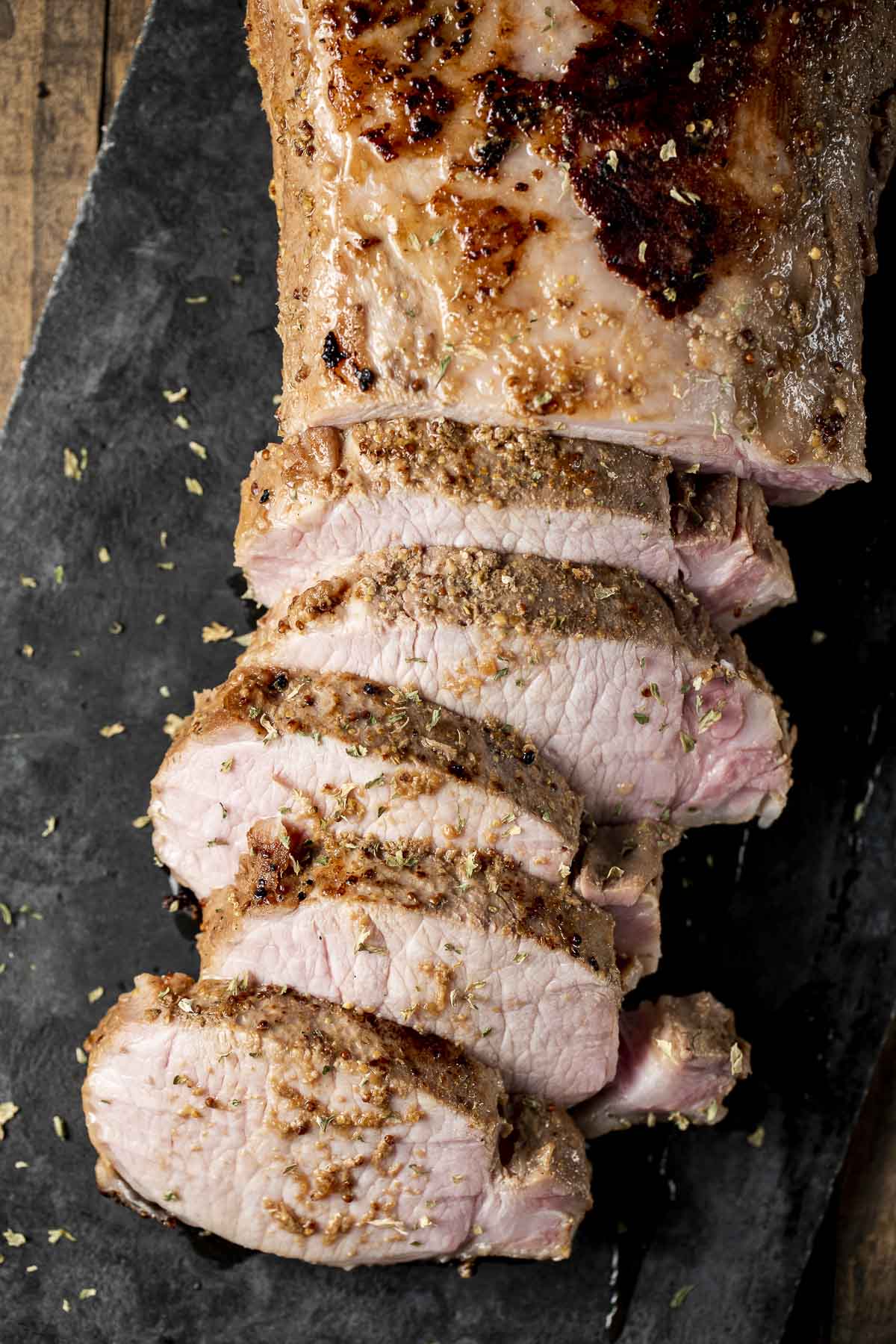
For more specific times and temperatures for individual cuts of pork, check out these recipes:
Fish
| Temperature | Time | Doneness |
| 105°F (40.5°C) | 45 minutes | Sashimi |
| 110°F (43°C) | 45 minutes | Soft & buttery |
| 115°F (46°C) | 45 minutes | Soft, starting to flake |
| 120°F (49°C) | 45 minutes | Flaky & moist |
| 130°F (54.°5C) | 45 minutes | Firm |
I often choose not to sear fish to avoid overcooking of any kind - plus it more easily falls apart and can be difficult to sear. If it has a layer of skin, it can either be removed, or you can sear it to crisp it up.
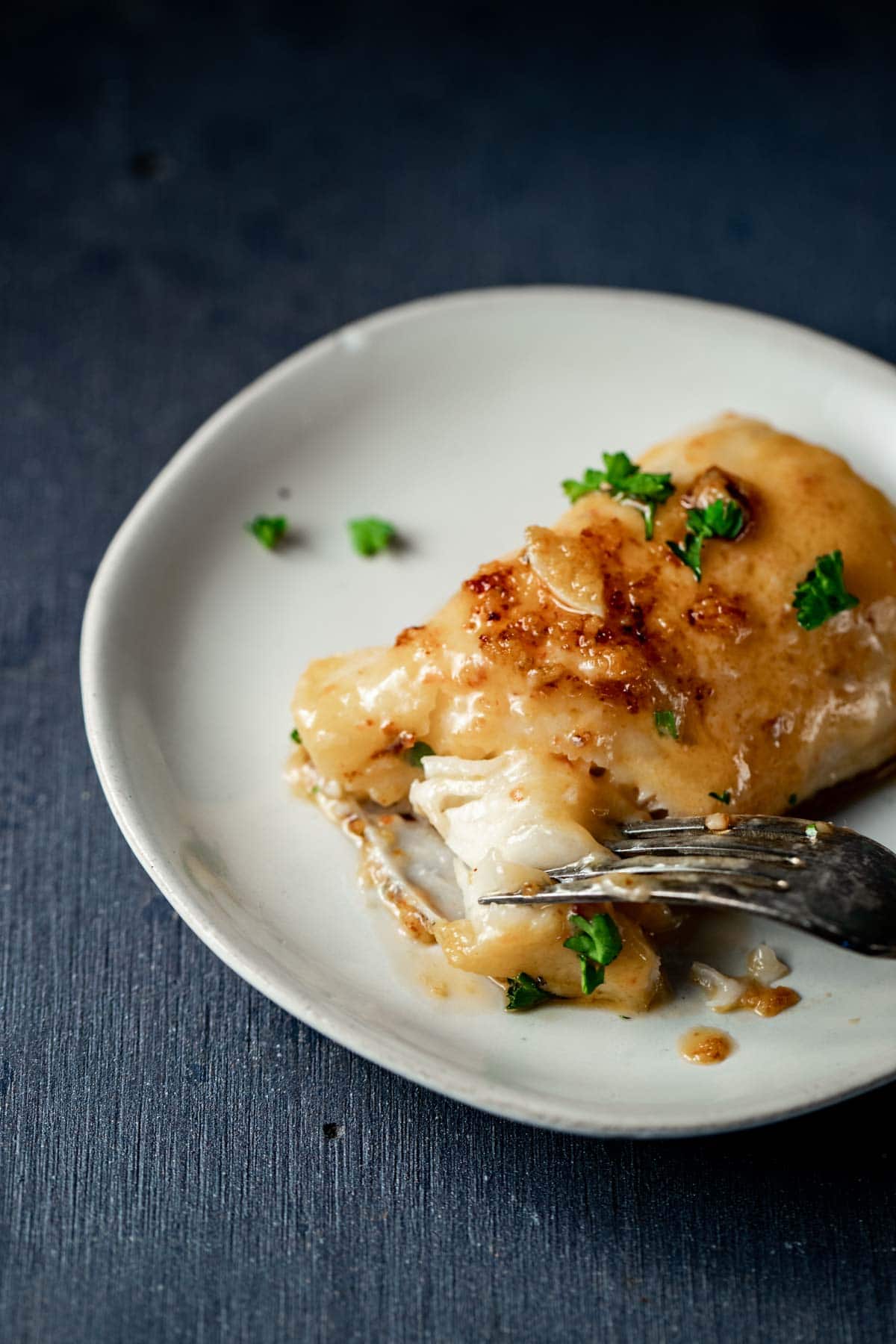
The temperature you cook fish at can vary depending on the type of recipe you are making and the desired results. Here are some reader favorite recipes:
- sous vide salmon
- sous vide scallops
- sous vide swordfish
- sous vide lobster tail
- sous vide shrimp
- sous vide sea bass
Root Vegetables
| Temperature | Time | Doneness |
| 185°F (85°C) | 1 ½ - 3 hours | Crisp tender to softer (carrots, beets) |
| 190°F (88°C) | 1 hour | fork tender, mashable (potatoes) |
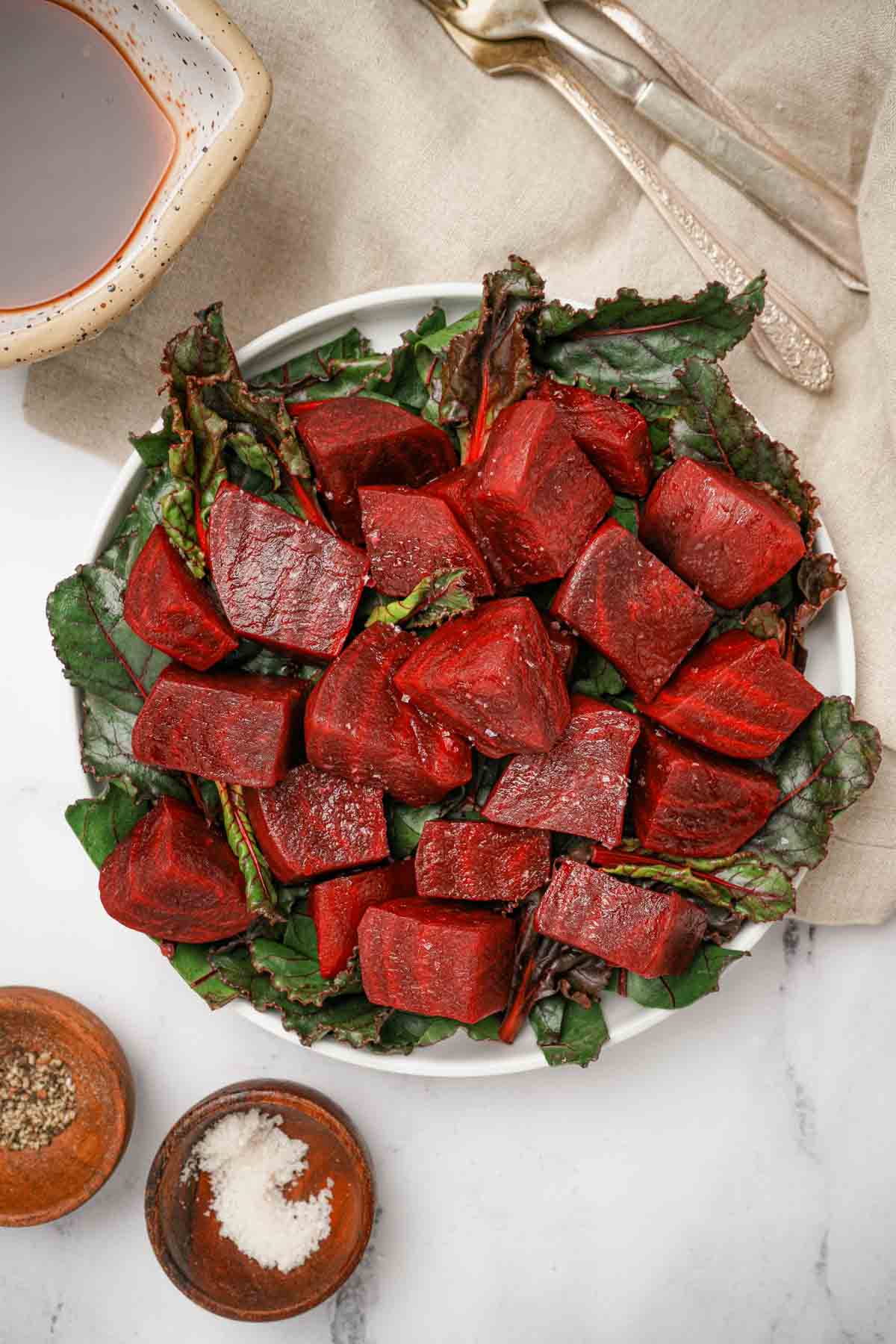
Root vegetables take longer to cook at higher temperatures than green vegetables (below). I love cooking root vegetables sous vide, then searing them to get that beautiful caramelization, like in these recipes:
Green Vegetables
| Temperature | Time | Doneness |
| 183°F (84°C) | 45 minutes - 90 minutes | Crisp tender (corn, leeks, cabbage) |
| 185°F (85°C) | 45 minutes - 90 minutes | Tender (broccoli, green beans, brussels) |
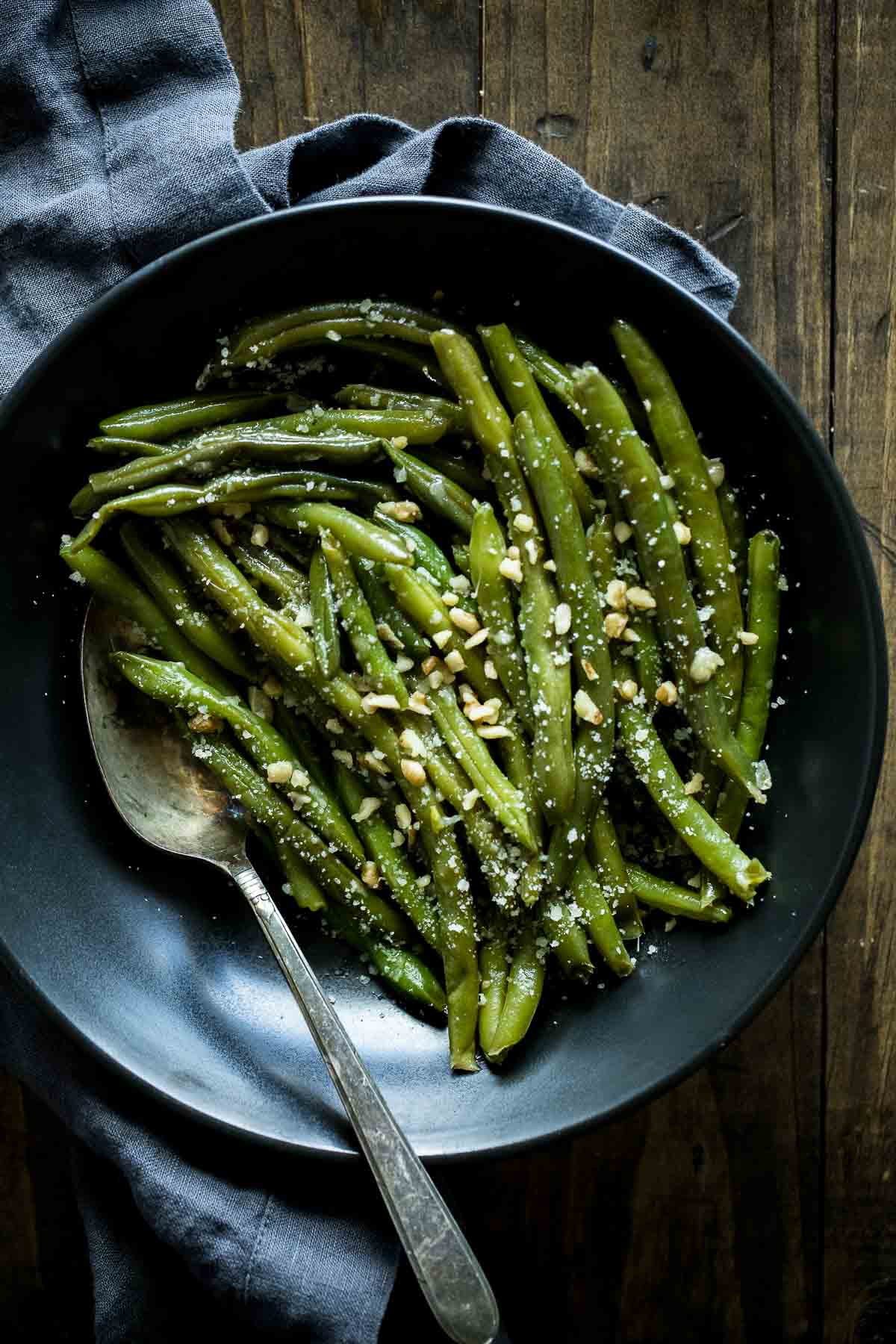
I love making vegetables sous vide because they come out perfect - not too hard, not all mushy like steaming them. Try some of the favorite recipes:
Dairy
| Temperature | Time | Doneness |
| 110°F (43.5°C) | 8-24 hours | Creamy and tangy (yogurt) |
| 179°F (82°C) | 1 hour | Creamy and smooth (custard) |
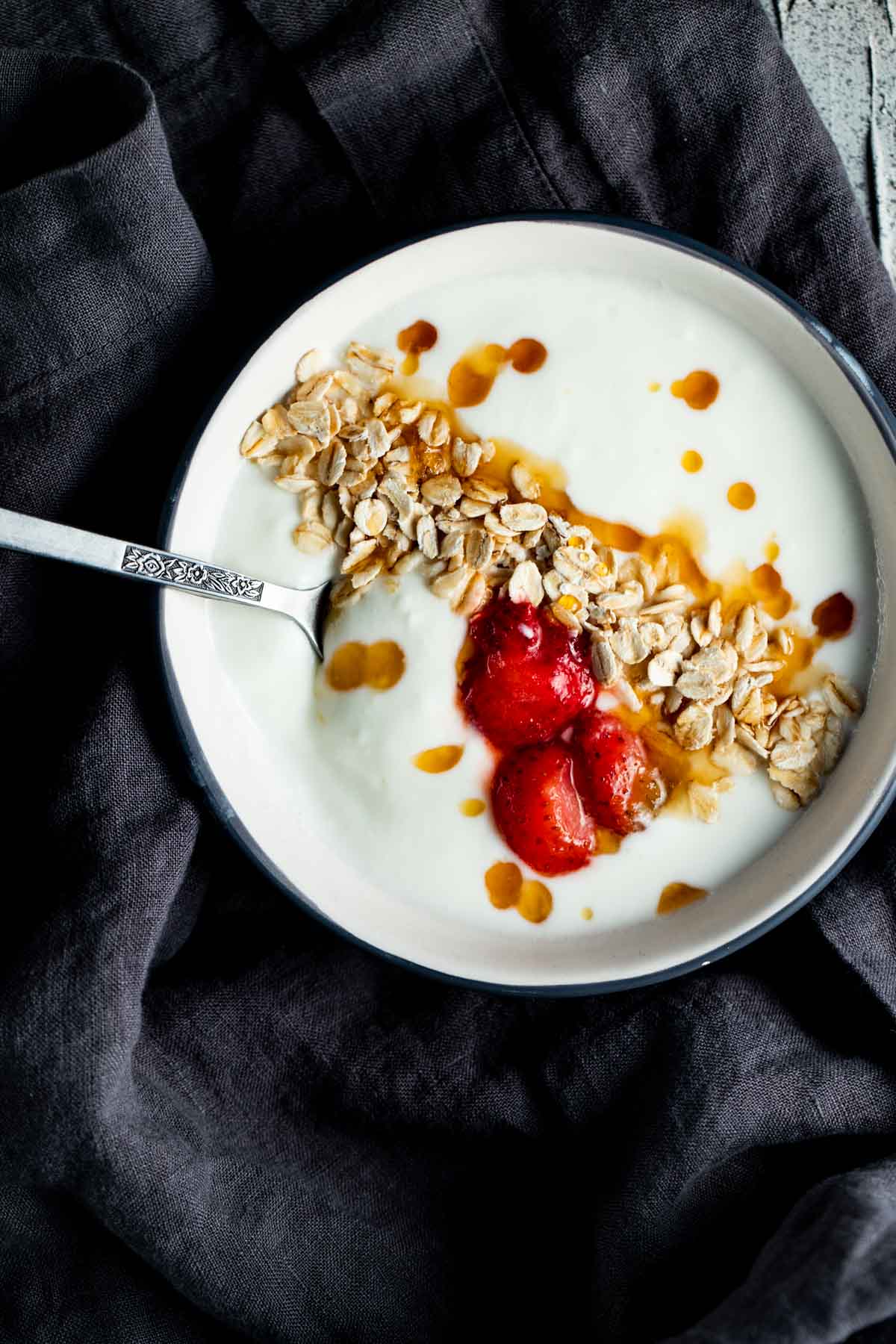
If you want ultra creamy custards or yogurts that are super easy to make with almost zero risk of curdling, make it sous vide. Try these:
Fruit
| Temperature | Time | Doneness |
| 175°F (79.5°C) | 45 minutes - 1 hour | Soft with a bite |
| 185°F (85°C) | 20 minutes - 60 minutes | Very soft |
Pasteurization
The above sous vide temperature charts only consider the time it takes to heat food through and/or dissolve collagen to make the meat succulent and juicy. While some of the longer cook times will naturally pasteurize the meat, not all the temperatures above will pasteurize.
If you are looking for a FREE guide to pasteurization, check this out:
Tips for Success
In any sous vide recipe, you can follow some simple tips for success to ensure you always get the best results:
- Use a thermometer to test and ensure your immersion circulator is calibrated correctly and heating to the correct temperature.
- Ensure your bag is air tight using vacuum seal bags or the water displacement method.
- If your bag starts to float, make sure to weigh it down with sous vide weights or another method to ensure the food stays fully submerged.
- If you don't plan on serving the food right away, place it directly in an ice bath for 20-30 minutes, then store in the fridge or freezer.
- Sous vide meats (beef, lamb, pork, etc.) have the best results when they are seared over high heat after cooking. This allows the Maillard effect to take place which produces the tasty caramelization on the outside. Always sear using high smoke point oils like avocado oil.
- In general, the better the quality of food you use, the better the results will be. For instance, I always recommend using Choice or Prime cuts of meat, free range fresh chicken, wild caught fish (when available), etc.
- Experiment with seasoning and/or marinades. With sous vide, you have so many options from amazing sauces to delicious marinades (I LOVE this mustard soy marinade).
- Use sous vide for meal planning! You can make batches of meat and vegetables and store them in the fridge for about 5-7 days (or freeze for 3 months) and use them all week to make meals. So easy!
Whew, now that was a lot of information in one post! I hope this sous vide temperature chart helps you get a handle on general cooking temperatures so you can get started using this amazing cooking method!
I want to know what you're making too...comment below and let us know how your journey is going!







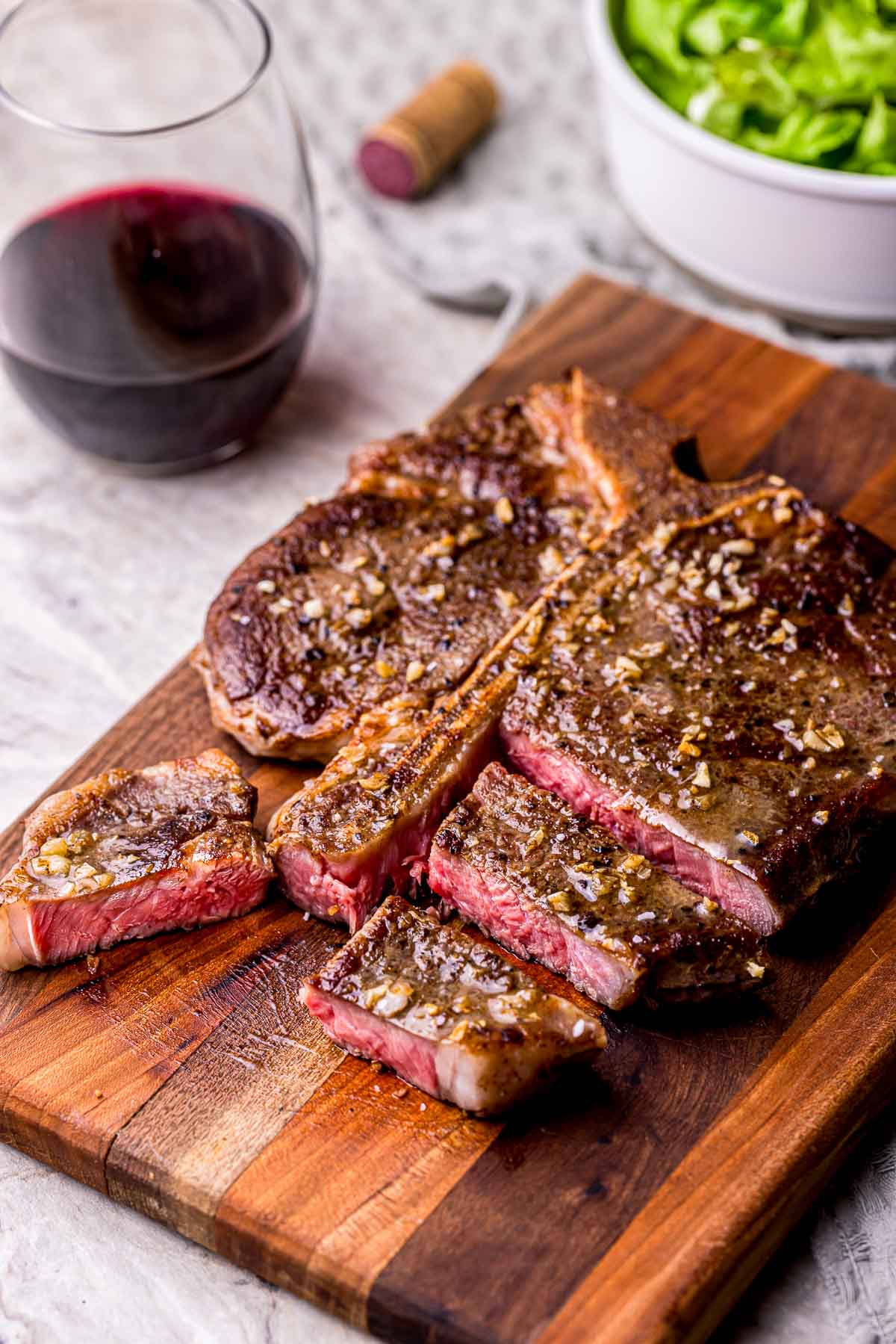
henry
This is so helpful! Thank you for all the great info.
Danielle
You're welcome!